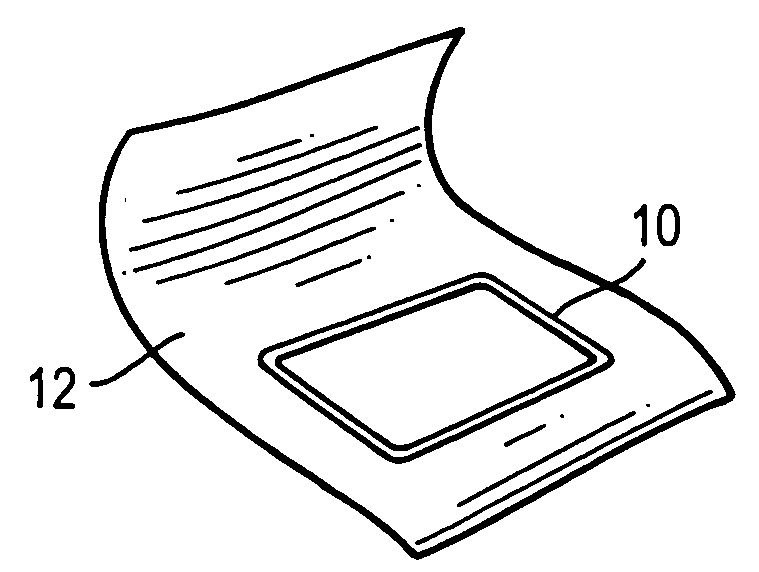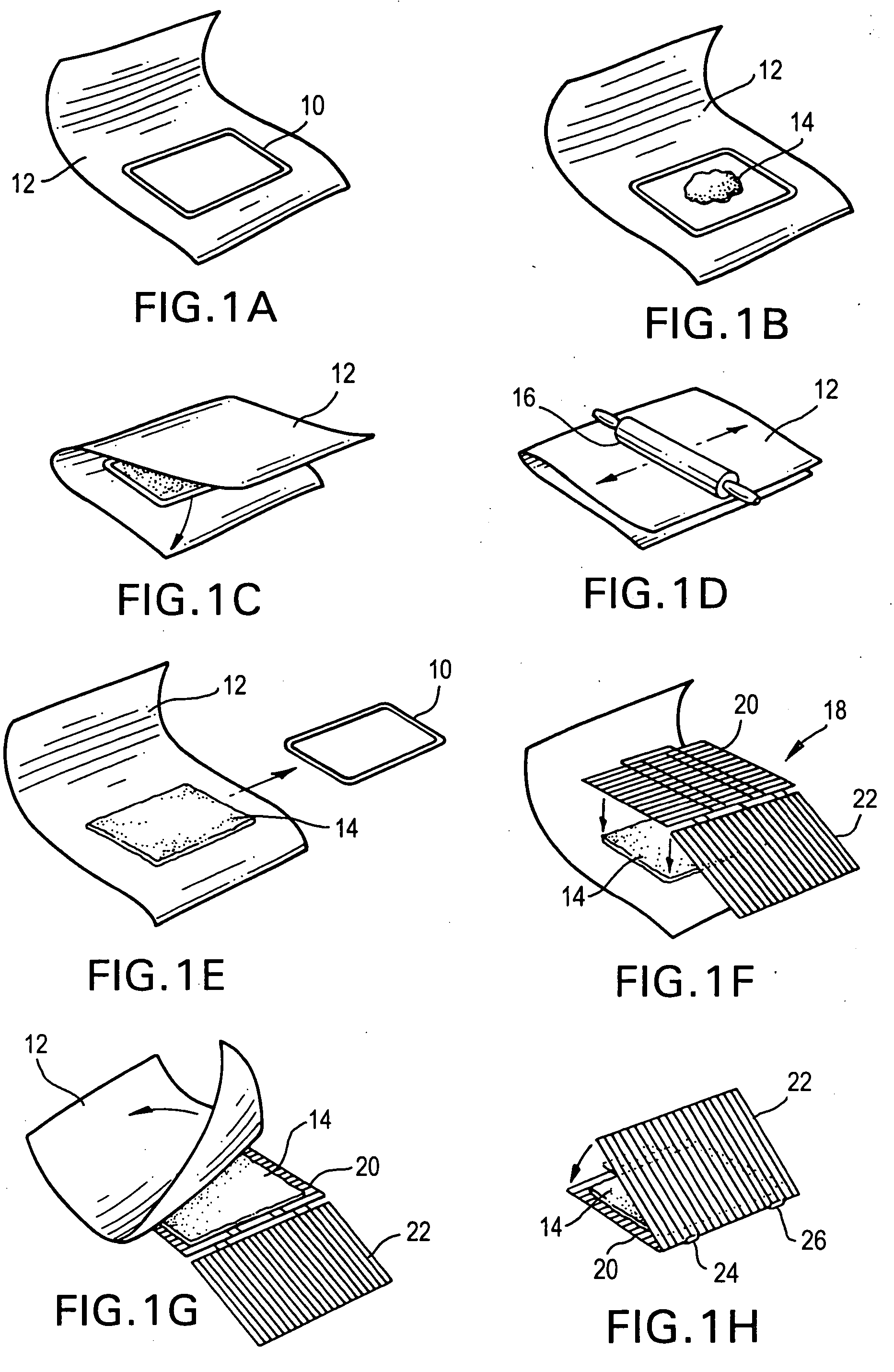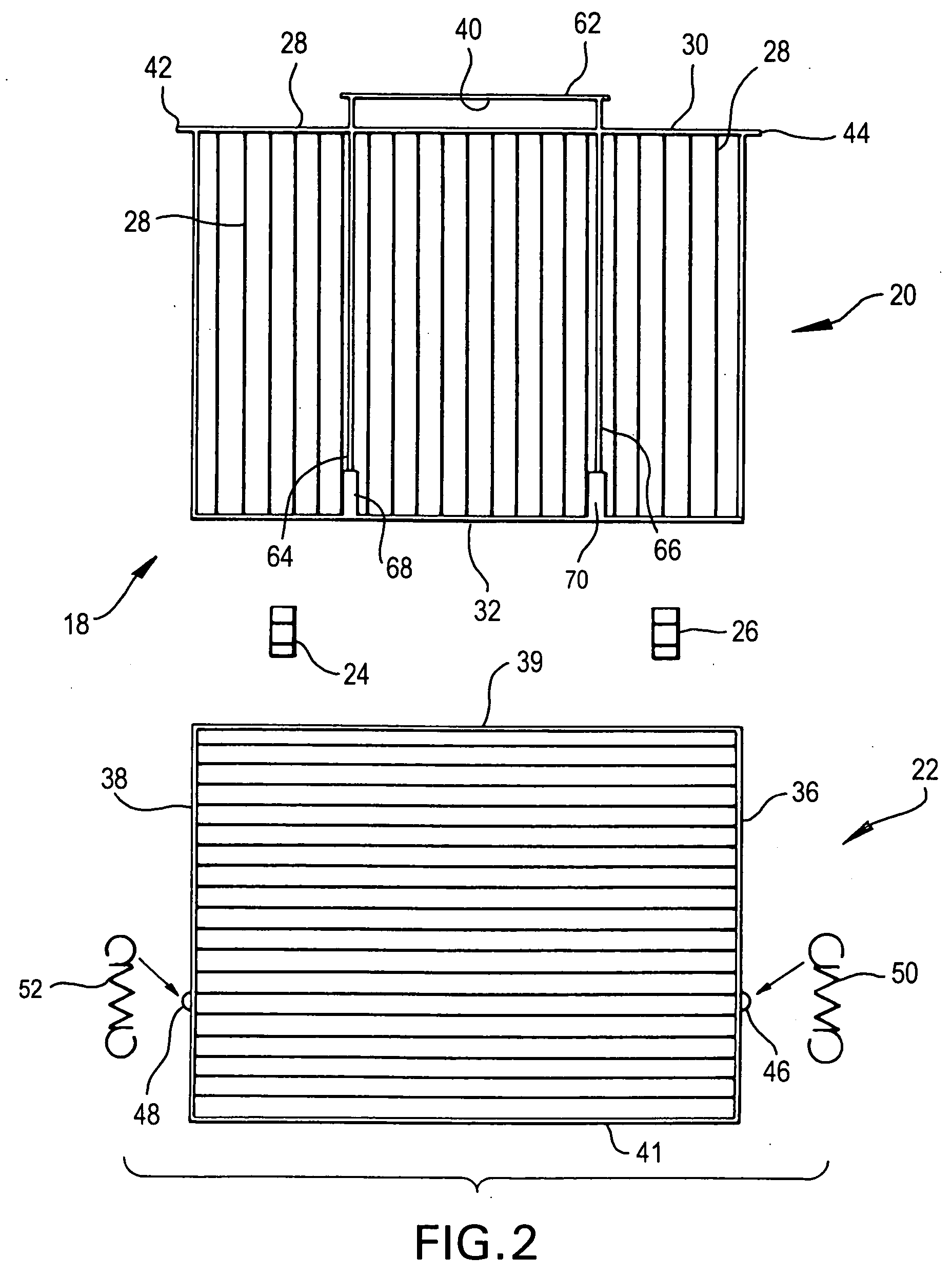Vertically oriented jerky dehydrator
a vertical orientation, jerky dehydrator technology, applied in the direction of meat/fish preservation by drying, milk preservation, food shaping, etc., can solve the problems of difficulty in evenly drying the contents of the rack, difficulty in circulating air through the rack, and the disadvantages of electric powered dehydrators. , to achieve the effect of minimizing the cleaning time and successful operation of the dehydration process
- Summary
- Abstract
- Description
- Claims
- Application Information
AI Technical Summary
Benefits of technology
Problems solved by technology
Method used
Image
Examples
Embodiment Construction
[0025]FIGS. 1A-1H depict, in schematic fashion, the sequence of steps used to prepare ground jerky for introduction into the dehydrator constructed in accordance with the principles of the instant invention. FIG. 1A shows form 10, of rectangular shape, placed on top of a sheet of non-stick paper 12. The non-stick paper may be parchment, wax paper, or aluminum foil, and the sheet of non-stick paper may be twenty four inches in length. Form 10 is positioned to leave a buffer, or margin, of two inches on each side and at the end of the paper.
[0026] A scoop, or handful, of ground jerky 14 is placed within form 10, as shown in FIG. 1B. The scoop may contain three-quarters of a pound of jerky, seasoned according to the user's recipes. The upper end of paper 12 is then folded over the top of form 10, so that the edges of the upper and lower runs of paper 12 are in alignment, as shown in FIG. 1C. Rolling pin 16 is then rolled back and forth across the upper surface of folded over paper 12,...
PUM
 Login to View More
Login to View More Abstract
Description
Claims
Application Information
 Login to View More
Login to View More - R&D
- Intellectual Property
- Life Sciences
- Materials
- Tech Scout
- Unparalleled Data Quality
- Higher Quality Content
- 60% Fewer Hallucinations
Browse by: Latest US Patents, China's latest patents, Technical Efficacy Thesaurus, Application Domain, Technology Topic, Popular Technical Reports.
© 2025 PatSnap. All rights reserved.Legal|Privacy policy|Modern Slavery Act Transparency Statement|Sitemap|About US| Contact US: help@patsnap.com



